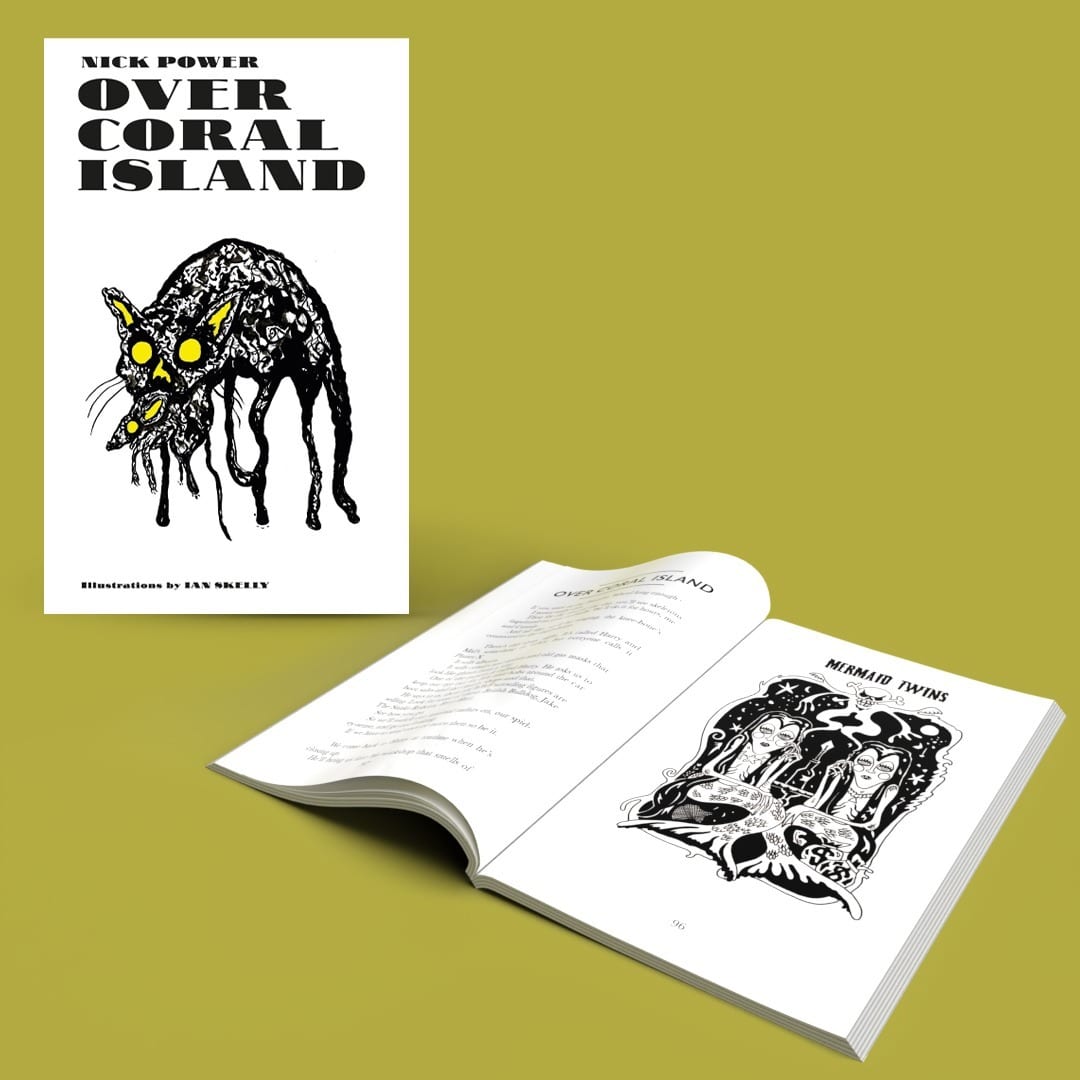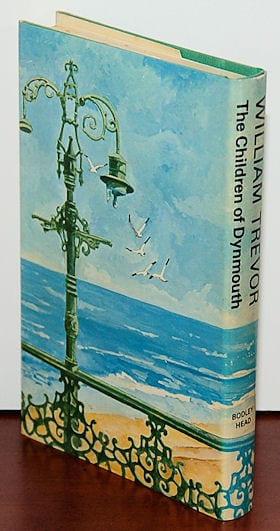Emerging from the seaside town of Wirral, The Coral are one of the UK’s most successful indie rock bands. In 2002 they were nominated for a Mercury Music Prize with their self-titled debut, which included their now certified-Platinum single, ‘Dreaming of You’.
Returning nearly two decades later and “compelled to create the unseen and the unseeable”, members Nick Power (keyboardist/vocals) and Ian Skelly (drums/percussion/vocals) are expanding on the highly anticipated concept of their new double album Coral Island—set for release on 30th April—by releasing a book alongside titled Over Coral Island.
Not shy of penning words with an undefined meaning, Nick has previously written three anthologies, including one called the Caravan. He has also written The Coral’s tour diary. Ian too has worked on previous cover artwork for the Distance In Between and has exhibited work, bringing to life Skeleton Coast through the power of his horror-infused art. The Indiependent caught up with Nick to hear about Over Coral Island and its relation to their forthcoming album.
The Indiependent: Welcome to Coral Island feels like you’re entering a new realm while also being nostalgic. Was there anything you did as a band, or with Ian that leads you to this place of almost unreachable imagination in both your lyrics and the accompanying book?
Nick: With the Wirral being a northern seaside town, nostalgia is everywhere—you can’t escape from it. You get surrounded by the ghosts of Mersey beach along with the faded glamour of all the seaside towns which are almost abandoned now. They have their own desolate magic, they don’t attract the same kind of tourists as they used to. In this kind of environment you often fill in the blanks with your own imagination, a lot of the time it is just about writing what you see.
The Indiependent: Coral Island has many themes surrounding the beach, including the palm trees in ‘Calico Girl’ and the island’s map in the book. What does the beach mean to you and why is this significant?
Nick: The beach is the lifeblood of the area. If you grow up next to the beach, it tells you that you can always escape where you live, even in your imagination, from your job, from wherever you are. It’s saying here’s an escape route to the world and because it’s kind of blank a lot of the time, you can fill it in yourself. Again, it’s been the mainstay of what we write about; another factor being that maritime history is right on our doorstep.
The Indiependent: Prior to this album we have seen Ian collaborate with Anna Benson on artwork. What made you two collaborate for the book this time round?
Nick: Anna Benson is an artist but also Ian’s wife, so they are used to collaborating on many things. I’ve personally always loved Ian’s artwork and we’re all big British comic book fans, i.e. Vertigo and Constantine. Ian is a big fan of both of them too, he is great and always drawing, he does all our album sleeves. If I’m gonna do a book and it’s a Coral book it made sense to have him as the illustrator.
The Indiependent: The illustrations are reminiscent of the traditional old school tattoo style—it makes sense now you mention comics being of influence. Who in particular influenced your style?
Nick: Collectively comic books but I know that for Ian, Steve Ditko is a huge influence in terms of style. Leading back to Constantine, Swamp Thing was one of Alan Moore’s early creations—that’s about a guy from Liverpool who is a psychic detective. It’s the same as what we try to do. It’s not complete fantasy but nor is it total reality—it’s kind of a magic in-between. Magic realism. His stories are detective based but there is often a little bit of witchcraft.
The Indiependent: The cat and mouse is the first illustration we as fans have to introduce the book, it is that of Picasso’s ‘cat catching a bird’ artwork. What is the significance of the cat to the story?
Nick: Ian drew that because we already had a cover, but we decided it looked like something we had previously done. We were looking at cult books from the ’40s and 50s, and we wanted something reminiscent of the old cover of Under Milk Wood. He then drew the Cat which is a bit pagan in style, and that just summed the whole book up. We wanted something horror, something pagan and something cartoony and it has all of those aspects. It has everything an undercurrent desolate seaside town would have.
The Indiependent: The pirate theme with the map was cool.
Nick: Yeah that’s tuning into teenage fatalist novels, like The Outsiders or even The Goonies where there are kids together. Some of our stories are based on that with the map tying it all together.
The Indiependent: How did you come up with the idea of writing a book to go alongside the music or was it already an aspiration of yours to write and publish?
Nick: Previous to this book, I’ve done a tour diary and I’ve bought a few poem books out. When we started making the album, I thought this would be a good way of expanding on the Coral Island world. It’s a double-album and with the book concept added, the more you can immerse yourself in the island, the better. The book expands on the characters of the songs; you can revisit a song but if you’re a fan, the book expands that idea for you. There’s a little bit in some of the interludes that I wrote for the album, where we had a house band in an old hotel on the island, so everything is written from that perspective. All the old carnies go there to get pissed during the day, there’s nothing else for them to do, all the rides are closed down, the piers are shut. There’s an old strong man called ‘The Great Lafayette’ and mermaid twins in electric wheelchairs, the old werewolf who’s now a drunk. This is all the stuff happening in the album, so for the book I took all of those characters and gave them all their own short story.
The Indiependent: Both the illustrations and the music are seemingly influenced by the artistic movement of Surrealism—does your story come from the mode of expressive writing called automatic writing ?
Nick: I don’t think I can pigeonhole my work. I try and learn and give respect to the craft. Automatic writing is great if what you write is great, but a lot of the time the first thing you write is awful. A lot of the craft is in the editing process. I walk around and get lost in my imagination, but it takes a certain amount of work to knock it into shape.
The Indiependent: Focusing just on the words of the book, what other authors inspired you and did you have a childhood book that you took influence from?
Nick: Yeah, loads of kids books. There’s a book called The Children of Dynmouth by William Trevor; Brighton Rock by Graham Greene; The Stowaways by Roger Mcgough and then obviously the comics—that only touches on the general sources of influence.
The Indiependent: There are 20 new illustrations to be released. What were your first thoughts on how you would push the creative boundaries, while still linking with the music?
Nick: I would just describe it as an extension of the songs. The songs are about space a lot of the time and if you say too much in a song, it becomes crowded and it can’t breathe. Writing a good song means writing as much as possible, but in few words, this is an extension of the album created on the foundation of immersion.
The songs are about space a lot of the time and if you say too much in a song, it becomes crowded and it can’t breathe.
Nick Power, The Coral
The Indiependent: On Coral Island there is a rarefied cocktail of Buckfast and White Lightning—is this something you have actually tried?
Nick: Yeah it’s really good!
The Indiependent: Was the album or book fuelled by natural imagination or did anything else help you to reach your peak?
Nick: The only thing that fuelled us was the island’s cocktail—Tartan Turpentine!
The Indiependent: Do the illustrations being of minimal colour lead on from the Distance In Between album cover artwork?
Nick: I’ll be honest I considered doing the whole book in colour but I was worried about how much it would cost to print.
The Indiependent. The album and the book are very self-expressive. ‘The Last Entertainer’ finishes on a sadder note as the journey comes to an end. Were there times in the making process that were particularly dark, where the need for imagination was imperative—particularly when you were looking back for inspiration ?
Nick: We recorded the album over one summer, it was a really creative time. We were just all in and out of the studio, it was really fuelled by the concept we made, making for an amazing time. Now with this album coming to a close, I really like walking around and thinking things up, losing myself in the concept. This is the sad bit for me. Even yesterday I was trying to come up with ideas for the Twitter listen party for the album and I thought I’m not going to be able to do this again in two or three weeks when the album is out. The time that you’re mentioning when things get dark is probably now for me. It will be over soon and there’s no going back—as a band we’ve also come out of that dark place in the last two years, so it’s all about being creative now that we’ve come out of the woods.
Words by Molly Noble
Support The Indiependent
We’re trying to raise £200 a month to help cover our operational costs. This includes our ‘Writer of the Month’ awards, where we recognise the amazing work produced by our contributor team. If you’ve enjoyed reading our site, we’d really appreciate it if you could donate to The Indiependent. Whether you can give £1 or £10, you’d be making a huge difference to our small team.

